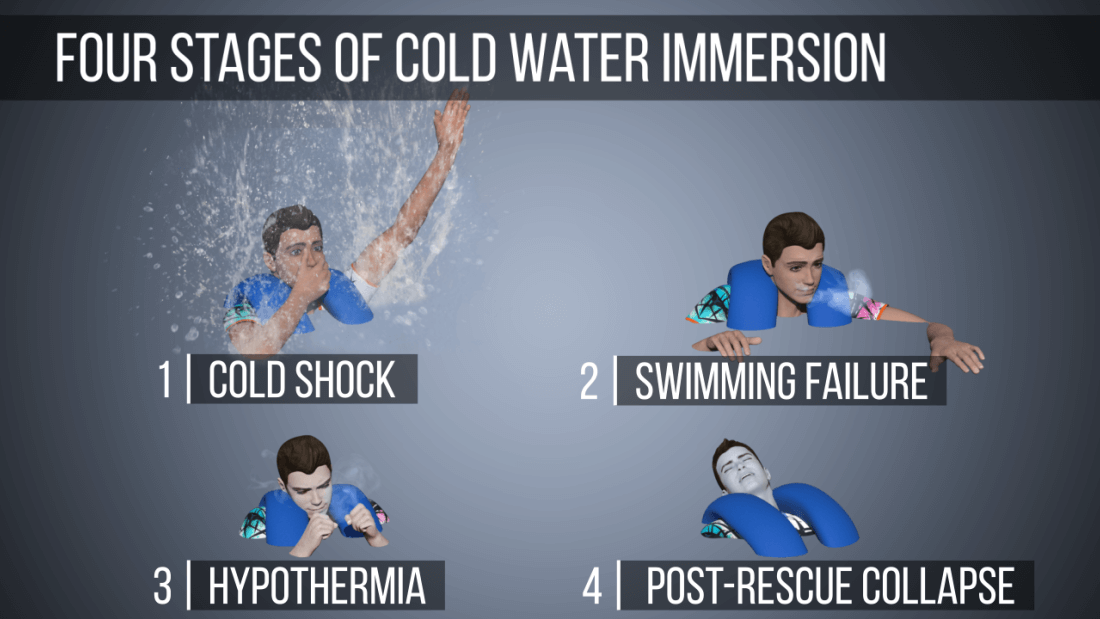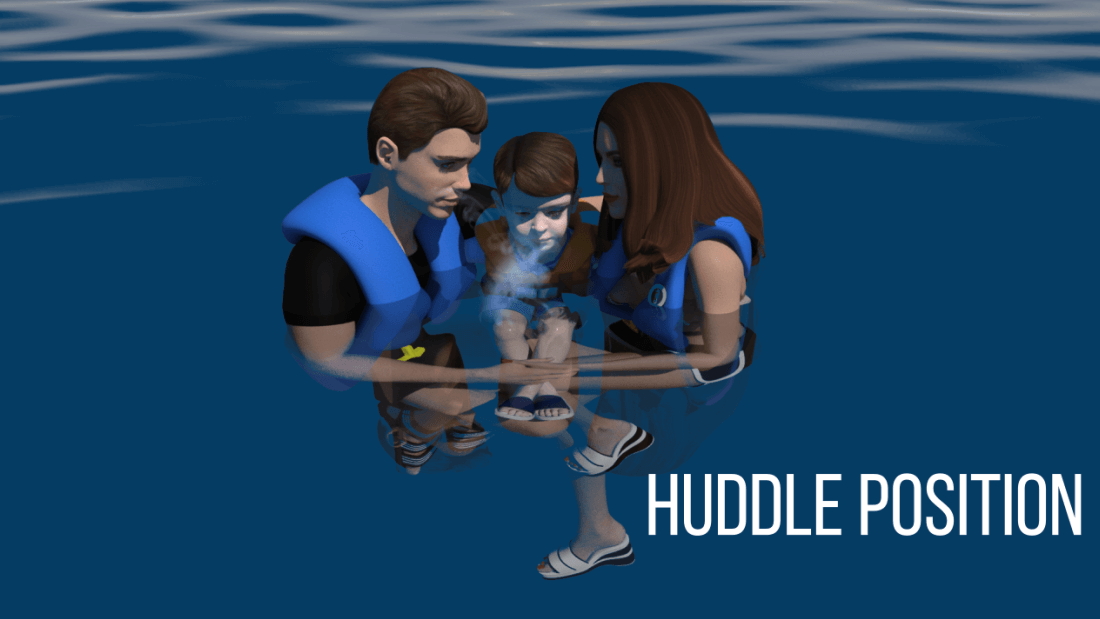Surviving in cold water HELP position

Tips to increase your survival time if you find yourself in cold water
If you end up in the water, do everything you can to conserve energy and body heat. Swim only if you can join others or reach a safe haven. Do not swim to keep warm. It's difficult to know how long you can survive in cold water, but here are some tips to increase your survival time in cold water:
- wearing a Canadian-approved lifejacket or PFD. You will lose energy which is vital to survival, trying to keep your head out of the water if you are not wearing one;
- climbing onto a nearby floating object to get as much of your body out of or above the water as possible;
- if possible, adopt a heat escape lessening position HELP
HELP position
This position, commonly referred to as the fetal position, permits you to float effortlessly and protect those areas most susceptible to heat loss. Cross your arms tightly against your chest and draw your knees up close to them;

Huddle position
If you find yourself in the water with others, huddle with others and make sure the sides of everyone’s chests are close together, with arms around mid to lower back, and legs intertwined.
Protect yourself by wearing a lifejacket or PFD, multiple light layers of dry clothing and a water or wind-proof outer layer.

Other equipment that come in a variety of styles and names, and provide additional protection from hypothermia include:
- floater or survival suits: a full nose-to-toes PFD;
- anti-exposure worksuits: a PFD with a thermal protection rating;
- dry suits: to be used with a floatation device and a thermal liner;
- wet suits: to be used with a floatation device, traps and heats water against the body ;
- immersion suits: to be used in extreme conditions when abandoning a vessel (usually for off-shore use).